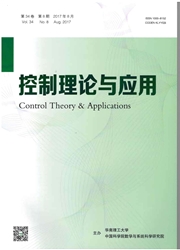

 中文摘要:
中文摘要:
钱学森先生1945年在论文《论高超声速相似律》中,首次提出了高超声速(hypersonic)的术语.高超声速飞行器具有的强大的军事和民事应用前景,20世纪80年代初,在世界上掀起了研究和发展高超声速飞行器的热潮,其中高超声速飞行器控制是其关键科学和技术问题之一.高超声速飞行器的研究取得了大量理论成果,与其形成鲜明对比的是,高超声速飞行器在试飞实验中却遇到了很大困难,例如X–51A, HTV–2.这种现象不得不引发我们进行深入思考.由于高超声速空气动力学研究的局限性,导致目前所建立的高超声速飞行器的动力学模型,与真实系统相比,其结构和参数不确定性非常大,它从根本上限制了控制理论和方法的研究.并且由于高超声速飞行器动力学模型的复杂性,导致目前工程应用中的控制方法复杂化.因此,针对高超声速飞行器控制问题,需要深入开展气动、控制交叉学科的研究,以及适于工程应用的自适应控制的研究.针对上述问题,我们开展了一定的研究.我们建立了三轴耦合的高超声速飞行器被控对象类X–20及其气动模型,并结合工程应用,直接针对表格形式的气动模型开展控制研究.针对强耦合和无解析动力学的控制问题,特征模型理论有其独特优势.近年来,我们系统研究了基于特征模型的高超声速飞行器的爬升、滑翔和再入控制问题.本文首先介绍特征模型理论和方法,进而综述和分析基于特征模型的高超声速飞行器自适应控制的研究进展,并提出进一步需要研究的问题.
 英文摘要:
英文摘要:
Tsien Hsue-shen proposed the terminology hypersonic in the paper“similarity laws of hypersonic flow”for the first time in 1945. Hypersonic flight vehicles have strong military and civil application prospects, where the control of hypersonic flight vehicles is one of the key science and technology problems. The researches of hypersonic flight vehicles have made great progresses; while there have been great difficulties in the test of them, for example, X–51A and HTV–2. This phenomenon has to trigger us to think profoundly. The restriction of the research of aerodynamics results in the current dynamic models with significant uncertainties of structure and parameters compared with the true vehicles, which restricts fundamentally the research of its control theory and approach. And the complexity of the hypersonic dynamics results in the complication of the control method in engineering. Hence, for the hypersonic flight vehicle control problem, we need to the study the interdisciplinary of aerodynamics and control and the adaptive control apt to the engineering. For the above problems, we have done some researches. A three axes coupling hypersonic flight vehicle model analogy X–20 and its aerodynamic model were constructed. Combining the engineering, the control was research according to the table type of aerodynamic data. The characteristic model has the important advantages with strong coupling and without analytic dynamic equation. In recent years, characteristic model-based control of hypersonic climbing, gliding and reentry have been researched. In this paper, we shall first introduce the characteristic theory. This review of the characteristic model-based control of hypersonic flight vehicles is followed. Finally, conclusions and future work are summarized.
 同期刊论文项目
同期刊论文项目
 同项目期刊论文
同项目期刊论文
 期刊信息
期刊信息
